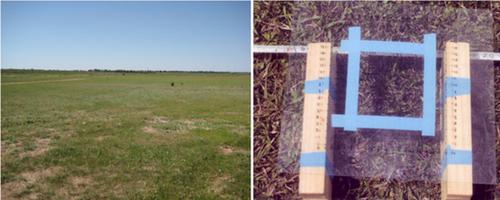当前位置:
X-MOL 学术
›
Ecol. Res.
›
论文详情
Our official English website, www.x-mol.net, welcomes your
feedback! (Note: you will need to create a separate account there.)
Quantitative evaluation of species composition dissimilarity within a community and among communities
Ecological Research ( IF 1.7 ) Pub Date : 2020-12-22 , DOI: 10.1111/1440-1703.12192 Jun Chen 1 , Masae Shiyomi 2 , Daming Huang 3 , Houlin Yu 1
Ecological Research ( IF 1.7 ) Pub Date : 2020-12-22 , DOI: 10.1111/1440-1703.12192 Jun Chen 1 , Masae Shiyomi 2 , Daming Huang 3 , Houlin Yu 1
Affiliation

|
It is often necessary to perform quantitative comparisons and assessments of species composition among plant communities under various land use conditions and landscapes, as well as among plant communities at different stages of restoration or degradation in arid grasslands. In landscapes composed of a number of plant communities, in which many quadrats for a survey are set in each community, the species composition in each quadrat is measured using community variables, such as the presence/absence data (i.e., binary variable), biomass, cover, the number of individuals, or the frequency of occurrences (i.e., quantitative variables) of each species per quadrat. In this study, we defined two types of species composition dissimilarity in vegetation surveys: between different communities and within each community which were calculated based on the species composition of each quadrat, using the Bray–Curtis index. The second type dissimilarity occurs incidentally among quadrats (or micro‐sites) even in a community with a relatively uniform structure. Both dissimilarity measures take values from 0 to 1, where larger values indicate larger dissimilarities, and the quadrat‐to‐quadrat variation in dissimilarity also indicates the degree of heterogeneity in the spatial pattern of species composition. Quantifying dissimilarity between and within communities remains a challenge in ecological applications. We proposed a new model to quantify community dissimilarity and applied this model to a grassland vegetation survey dataset. Quantitative variables resulted in more precise measures of community structure than binary variable. The advantages of our model relative to other broadly used community structure metrics based on the Jaccard and Sørensen indices were discussed.
中文翻译:

社区内部和社区之间物种组成差异的定量评估
通常有必要对各种土地利用条件和景观下的植物群落之间以及干旱草原恢复或退化的不同阶段的植物群落之间的物种组成进行定量比较和评估。在由许多植物群落组成的景观中,每个群落中都设置了许多要调查的四足动物,使用群落变量(例如存在/不存在数据(即二元变量),生物量)来测量每个四足动物的物种组成。 ,覆盖率,每类动物每个物种的个体数量或发生频率(即定量变量)。在这项研究中,我们在植被调查中定义了两种类型的物种组成差异:不同群落之间和内部每个群落是根据每个类的物种组成计算得出的,使用Bray-Curtis索引。第二类差异即使在结构相对统一的社区中也偶然发生在四方方(或微地点)之间。两种不相似度度量值的取值范围均为0到1,其中较大的值表明相异度较大,而方差到方差的相异度也表示物种组成的空间格局中的异质程度。在生态应用中,量化社区之间和社区内部的差异仍然是一个挑战。我们提出了一种新的模型来量化群落差异,并将该模型应用于草地植被调查数据集。定量变量比二元变量能更精确地测量群落结构。
更新日期:2021-01-13
中文翻译:

社区内部和社区之间物种组成差异的定量评估
通常有必要对各种土地利用条件和景观下的植物群落之间以及干旱草原恢复或退化的不同阶段的植物群落之间的物种组成进行定量比较和评估。在由许多植物群落组成的景观中,每个群落中都设置了许多要调查的四足动物,使用群落变量(例如存在/不存在数据(即二元变量),生物量)来测量每个四足动物的物种组成。 ,覆盖率,每类动物每个物种的个体数量或发生频率(即定量变量)。在这项研究中,我们在植被调查中定义了两种类型的物种组成差异:不同群落之间和内部每个群落是根据每个类的物种组成计算得出的,使用Bray-Curtis索引。第二类差异即使在结构相对统一的社区中也偶然发生在四方方(或微地点)之间。两种不相似度度量值的取值范围均为0到1,其中较大的值表明相异度较大,而方差到方差的相异度也表示物种组成的空间格局中的异质程度。在生态应用中,量化社区之间和社区内部的差异仍然是一个挑战。我们提出了一种新的模型来量化群落差异,并将该模型应用于草地植被调查数据集。定量变量比二元变量能更精确地测量群落结构。











































 京公网安备 11010802027423号
京公网安备 11010802027423号